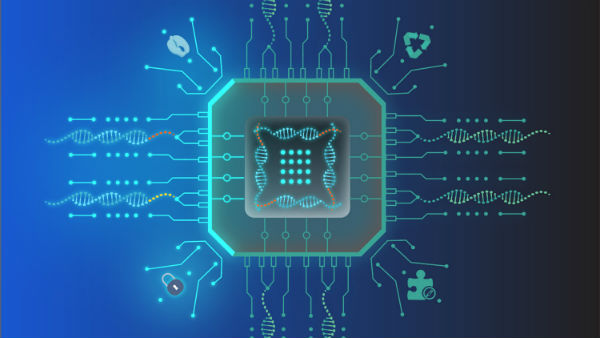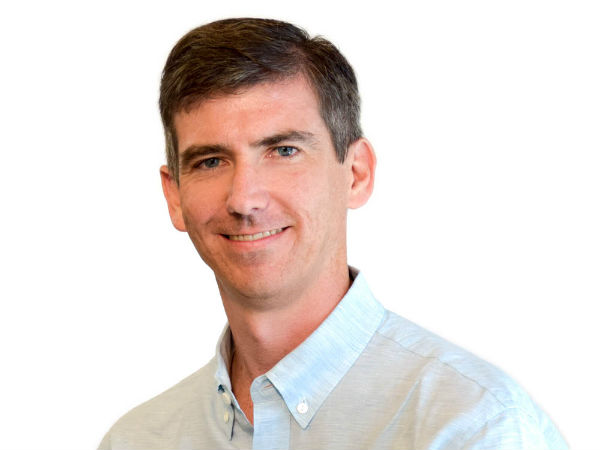
NCBiotech Grant Helps NC State Researchers Turn DNA to Data

The world produces far more data than it can store functionally, a reality that threatens to swallow existing infrastructure if innovation doesn’t intervene.
In recent years, DNA, our own building blocks, has emerged as a potential solution. It's a compelling idea, except the logistics of converting DNA into storage have made it impractical.
But this is a new day, say researchers at North Carolina State University.
The researchers, Albert Keung, James Tuck and Kevin Lin, have created a process called Dynamic Operations and Reusable Information Storage, or DORIS. It is, they say, an early but important step in moving DNA storage from exciting idea to functional reality.

The breakthroughs are a product of hard work, ingenuity, and a $24,000 Flash Grant from the North Carolina Biotechnology Center.
The grant, awarded in May of 2019, was a big part of the funding that paid for the foundational work driving their discovery, the researchers said.
Previously, the DNA had to be destroyed to make it a viable storage unit. Not anymore, they say.
The process used to require extreme heat and cold, so it could not be performed at room temperature. Not anymore, they say.

The practice was exciting but impractical. Not anymore.
Lin, Keung and Tuck unveiled DORIS this month in an article in Nature Communications. Kevin Volkel, a Ph.D. student at NC State, also contributed to the article.
“DORIS allows us to significantly increase the density of [a] system, and also makes it easier to scale up to handle really large databases,” Lin, first author of the paper and a Ph.D. student at NC State, said in a news release from the university.

Such scientific discovery doesn’t come cheap. Projects like this often require several rounds of funding to both get off the ground and keep from crashing back down. The initial outlay is immense, researchers say, and multiple funding sources are needed across a project’s timeline.
The process is similar to creating a startup company, Keung, an assistant professor of chemical and biomolecular engineering at NC State, said in an interview with NCBiotech.
“We had a lot of ideas we wanted to pursue and NCBiotech really helped us,” Keung said.
The funding structure can be complicated, and it can be difficult to persuade even well-funded investors to give over lots of money.
“Funding agencies tend to be risk averse,” said Tuck, a professor of electrical engineering.
“A project like this doesn't fit most of the typical pots,” he added.
“Getting people to support a new idea like this can be hard. So seed grants that help you get started and are understood to be higher risk and may not always pan out, are really what we need to do at first until we get enough research going and progress made that people start to believe.”
The flexibility of the NCBiotech grant allowed them to follow the science where it led.
“We were very excited to see this proposal appear for the first-ever cycle of the Flash Grant,” said Rob Lindberg, Ph.D., vice president of Science & Technology Development at NCBiotech. “DNA storage is an emerging technology area with clearly disruptive potential. Dr. Keung’s project embodies exactly the sort of exciting and high-risk/high-reward project for which we designed this microgrant program.”
In their application for the grant, Keung said, “we were very focused on the device itself.”
“But in the course of the work we ended up focused more on the molecular system to make it more compatible for any device.” The grant, Keung said, “helped open up a new area for us in general,” even as the central question remained. “The theme stayed the same: How do you make something that is scalable, reusable and dynamic? That idea is what the NCBiotech Flash Grant helped us to develop,” he said.
A big part of what makes DORIS different from other developments in the DNA storage field is its use of RNA. Instead of destroying the DNA strand to read it, the process transcribes the DNA to RNA, then transcribes it back into a DNA copy that the data storage system can read.
The NCBiotech grant helped pay for major components of this innovation. “The grant went toward DNA synthesis and sequencing, which are fundamentally required for DNA storage, and the enzymes we used to transcribe the DNA to RNA,” Keung said.
Tracey du Laney, Ph.D., NCBiotech’s director of Science & Technology Development, said the Flash Grant “was designed from the ground up as a method for NCBiotech to invest early in disruptive technologies that push the boundaries of scientific exploration, and move them into the next stage of development."
In other words, the grant did not pay for incidentals like office chairs and coffee machines. It helped pay for the fundamental science behind a potentially groundbreaking discovery.
“DORIS helps you hold onto your information longer,” Tuck said. “It moves you to a point where you can access data a lot more, and in a reliable way.”
The system, he says, puts us closer to the point where a voracious reader might be able to head to the beach with the entire Library of Congress catalogue contained in a humble thumb drive.
But there is still lots of work to do.
“DORIS doesn’t answer the question of how to even query the data, select the strands and perform analysis -- compute types of questions, those are still problems you’d have to solve,” Tuck said.
It is something they hope to work on, the team said. They just need more funding.
“We’re still discovering the fundamentals of manipulating DNA and answering how all these tools are going to be useful,” Keung said. The hope, he said, is that DORIS helps show how DNA can be envisioned in broader ways, and how, by harnessing molecular biology in aid of data storage, “we can start bringing these things together.”
With funding from NCBiotech and others, anything is possible.
“It’s an exciting time to see all of the life sciences advancements enabled by NCBiotech funding that were in the realm of science fiction just a few years ago,” said du Laney.
Keung concurred. “These are not crazy things to envision,” he said.
